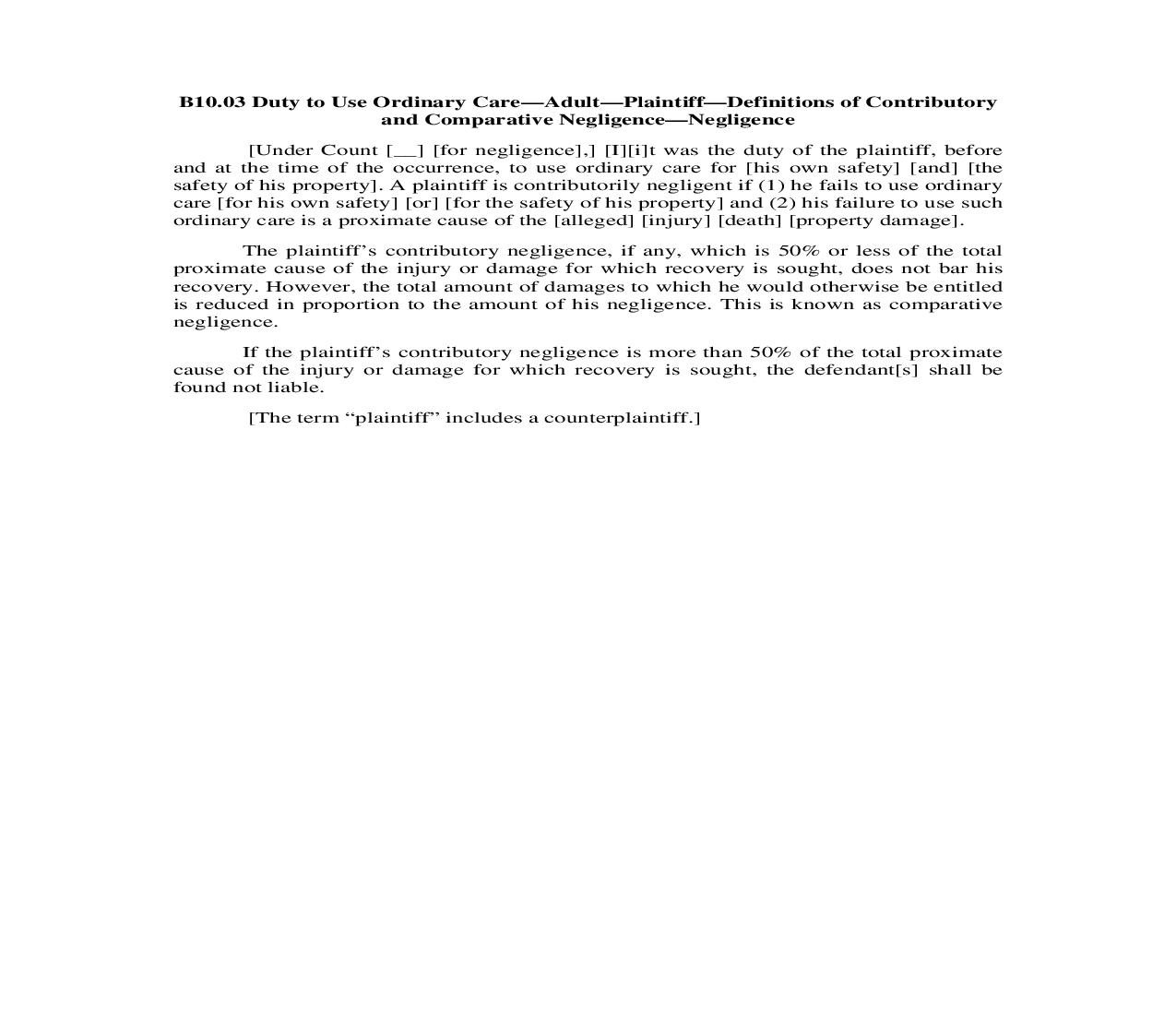
Last updated: 4/13/2015
B10.03. Duty to Use Ordinary Care-Adult-Plaintiff-Definitions of Contributory and Comparative Negligence-Negligence
Start Your Free Trial $ 11.99What you get:
- Instant access to fillable Microsoft Word or PDF forms.
- Minimize the risk of using outdated forms and eliminate rejected fillings.
- Largest forms database in the USA with more than 80,000 federal, state and agency forms.
- Download, edit, auto-fill multiple forms at once in MS Word using our Forms Workflow Ribbon
- Trusted by 1,000s of Attorneys and Legal Professionals
Description
B10.03 Duty to Use Ordinary Care--Adult--Plaintiff--Definitions of Contributory and Comparative Negligence--Negligence [Under Count [__] [for negligence],] [I][i]t was the duty of the plaintiff, before and at the time of the occurrence, to use ordinary care for [his own safety] [and] [the safety of his property]. A plaintiff is contributorily negligent if (1) he fails to use ordinary care [for his own safety] [or] [for the safety of his property] and (2) his failure to use such ordinary care is a proximate cause of the [alleged] [injury] [death] [property damage]. The plaintiff's contributory negligence, if any, which is 50% or less of the total proximate cause of the injury or damage for which recovery is sought, does not bar his recovery. However, the total amount of damages to which he would otherwise be entitled is reduced in proportion to the amount of his negligence. This is known as comparative negligence. If the plaintiff's contributory negligence is more than 50% of the total proximate cause of the injury or damage for which recovery is sought, the defendant[s] shall be found not liable. [The term "plaintiff" includes a counterplaintiff.]







